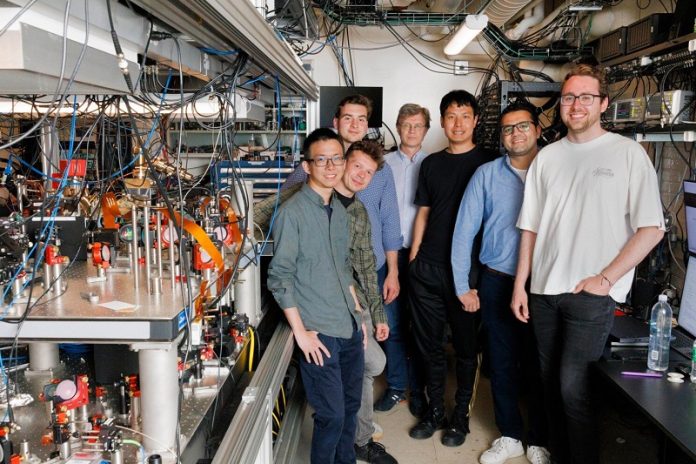
Quantum computers are often described as machines with almost unimaginable potential.
A famous comparison says that a system with 300 quantum bits, or qubits, could store more information than the total number of particles in the known universe.
Now imagine a system ten times larger, capable of running continuously without shutting down. That is exactly what Harvard physicists and their collaborators have achieved.
In a study published in Nature, a team led by Harvard and MIT scientists reported a quantum system with more than 3,000 qubits that ran for over two hours.
This breakthrough represents the first demonstration of continuous operation in a large-scale quantum computer, overcoming one of the biggest hurdles in the field.
Mikhail Lukin, professor of physics at Harvard and senior author of the paper, explained, “We demonstrated continuous operation with a 3,000-qubit system.
But it’s also clear this approach will work for much larger numbers as well.” The research was carried out in collaboration with QuEra Computing, a startup born out of the Harvard-MIT labs.
Unlike traditional computers, which use binary bits coded as zeros or ones, quantum computers rely on the strange rules of quantum physics.
Qubits, made from subatomic particles, can exist as zero, one, or both at the same time.
This superposition, along with a phenomenon called entanglement, allows quantum computers to process information in ways that grow exponentially more powerful with every added qubit.
But building large, reliable systems has been extremely challenging. One major issue has been atom loss. In many quantum systems, the qubits—often neutral atoms suspended in arrays—escape or lose their stored information.
This forces researchers to stop, reload atoms, and start over. Until now, that made continuous operation impossible.
The Harvard-led team solved this by creating a system that could automatically replenish lost qubits while preserving the information already in the machine.
Using tools called “optical lattice conveyor belts” and “optical tweezers,” which are essentially laser beams that move and arrange atoms, the researchers were able to load up to 300,000 atoms per second into the system.
“We’re showing a way where you can insert new atoms as you naturally lose them without destroying the information that’s already in the system,” explained Elias Trapp, a Ph.D. student and co-author of the study.
In practice, this means the system could keep operating indefinitely. Over the course of the two-hour test, more than 50 million atoms passed through the machine without disrupting its function.
The achievement was remarkable not only for its scale but also for its stability. By comparison, another team at Caltech announced a 6,100-qubit system in the same week, but it could only operate for 13 seconds.
The Harvard-MIT design proved that longevity may be more important than sheer size in moving quantum computers toward practical applications.
Follow-up experiments are already planned to use the system for actual quantum computations. “What really makes us stand out is the combination of three things—the scale, preserving the quantum information, and making the whole process fast enough to be useful,” said lead author Neng-Chun Chiu, a Ph.D. student in physics at Harvard.
The team also published two additional papers in Nature that expand the possibilities of this technology.
One described an architecture where atom arrays can be reconfigured during operation, making the processor more like a “living organism” than a traditional chip with fixed connections.
Another introduced new methods for error correction, a critical step toward building machines capable of executing billions of operations reliably.
Lukin believes these advances bring quantum computing closer to reality than ever before. “Realizing this dream is now in our direct sight for the first time, ever,” he said. “One can really see a very direct path towards realizing it.”
If quantum computers continue to develop at this pace, they could one day revolutionize medicine, finance, materials science, and countless other fields—tackling problems far too complex for even the fastest supercomputers today.
Source: Harvard University.



